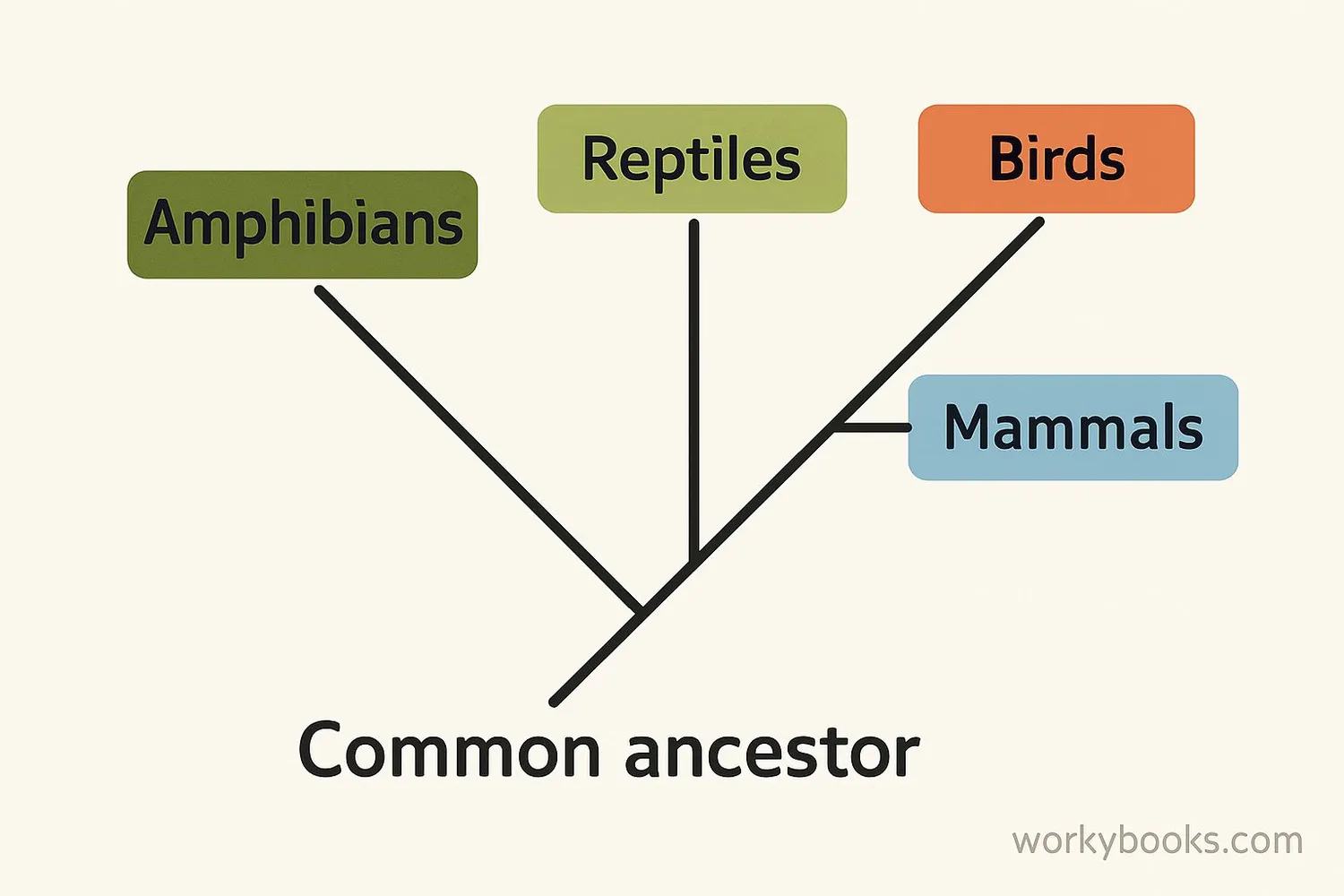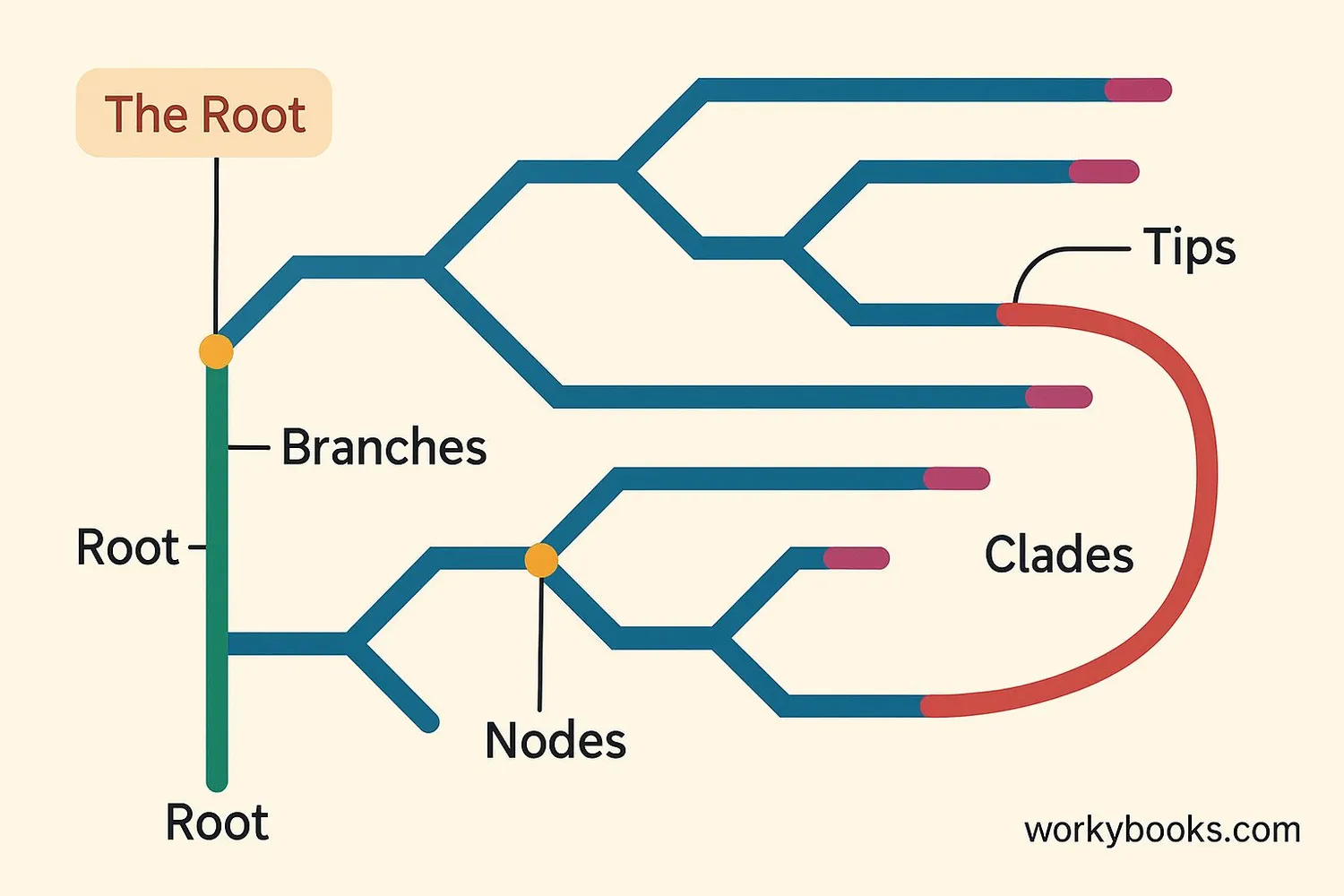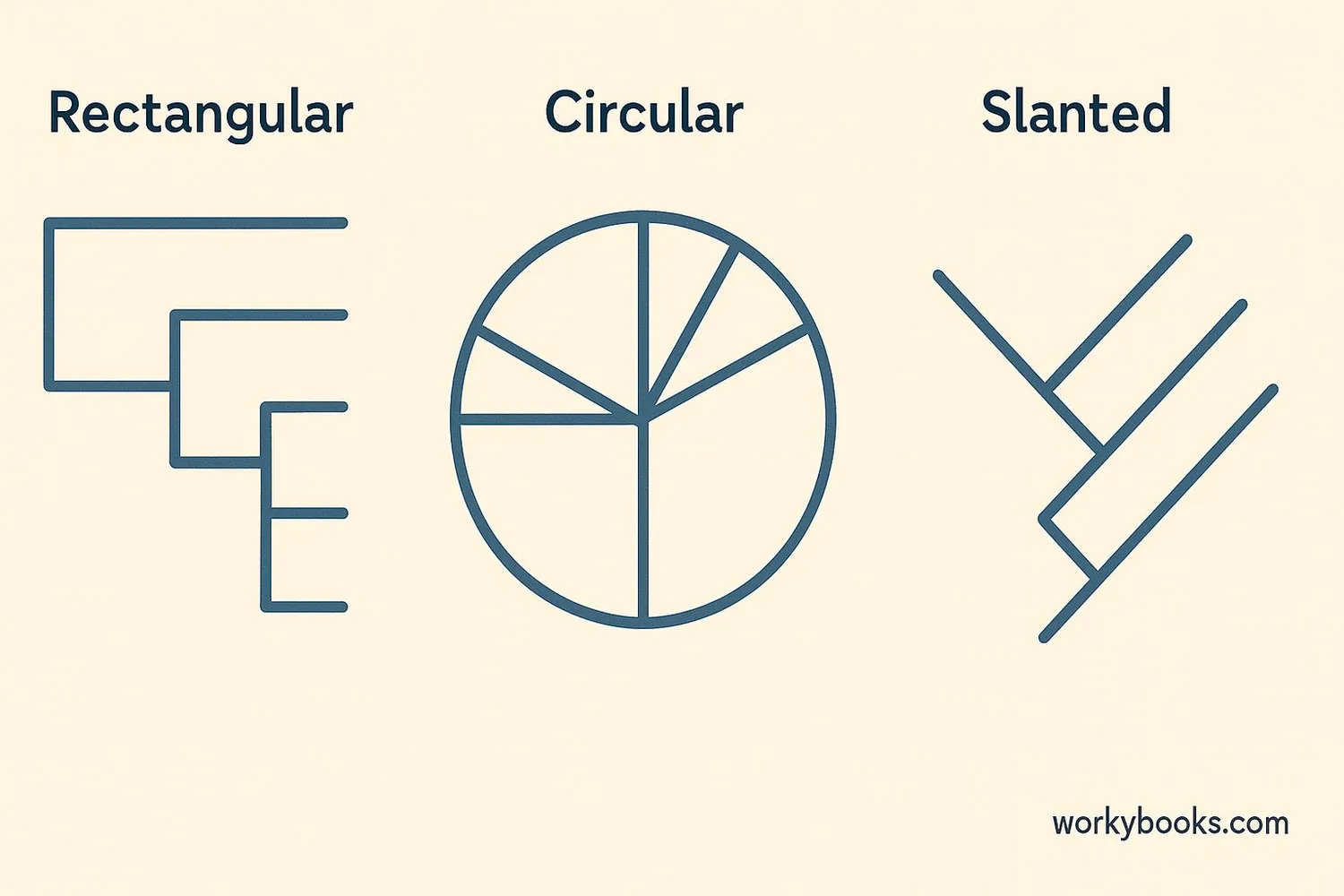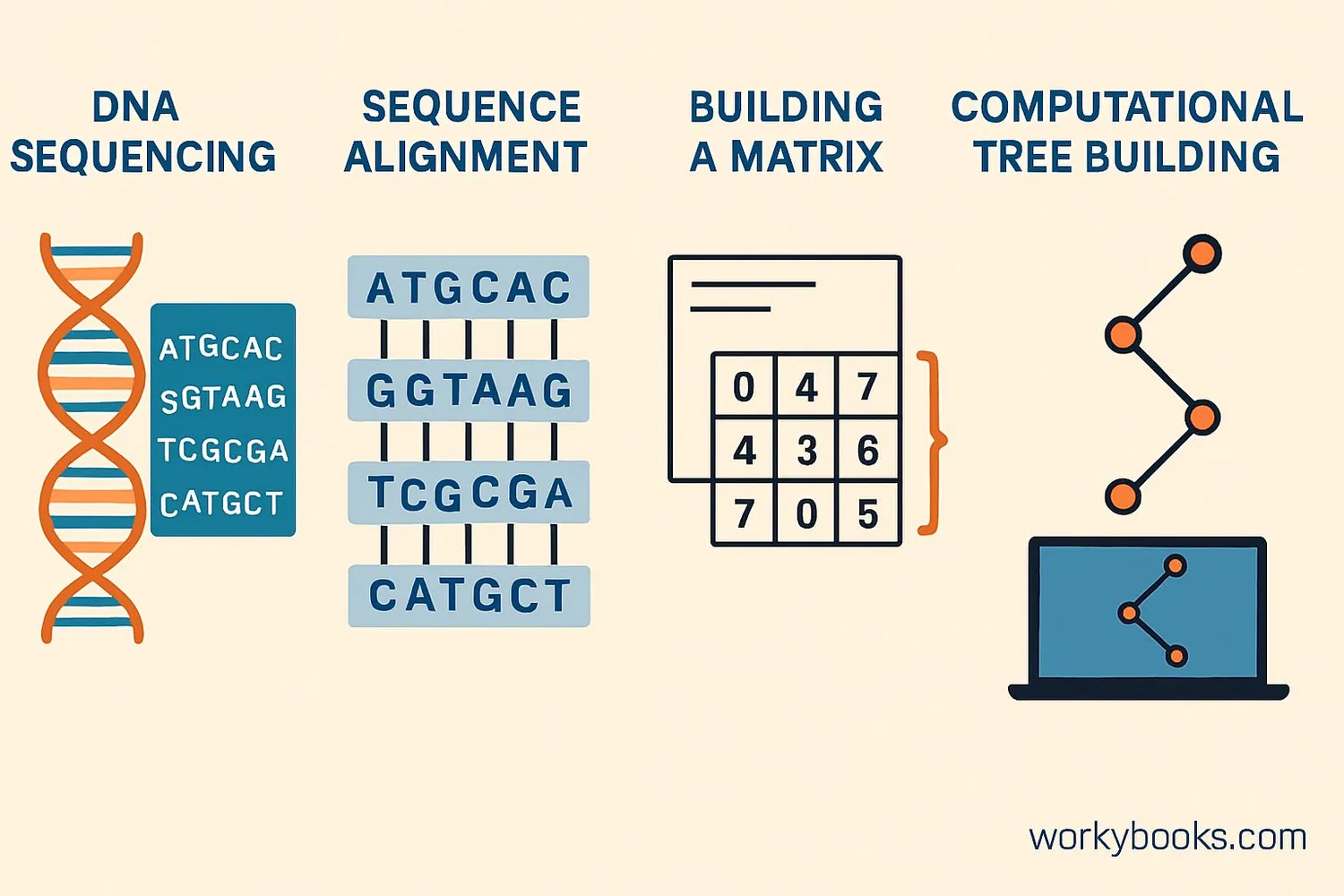Phylogenetic Trees - Definition, Examples, Quiz, FAQ, Trivia
Discover how scientists show relationships between living things
What is a Phylogenetic Tree?

A phylogenetic tree is a diagram that shows how different living things are related through evolution. Think of it as a family tree for species! It illustrates how organisms have descended from common ancestors over millions of years.
These trees help scientists understand the evolutionary history of life on Earth. They show which species are closely related and which are more distantly related. The branches represent lineages, and the points where branches meet (called nodes) represent common ancestors.
Key Point
Phylogenetic trees show evolutionary relationships, not just physical similarities. Two species might look alike but be distantly related evolutionarily!
How to Read a Phylogenetic Tree

Reading a phylogenetic tree might seem tricky at first, but it's like reading a map of evolutionary relationships. Here are the key parts:
Root
The base of the tree representing the common ancestor of all organisms in the tree
Branches
Lines showing the evolutionary path of populations over time
Nodes
Points where branches split, representing common ancestors
Tips
The endpoints representing living species or groups
Clades
Groups that include all descendants of a common ancestor
The closer two species are on a phylogenetic tree, the more recently they shared a common ancestor. Time is typically represented from the root (oldest) to the tips (most recent).
Reading Tip
Rotating branches around a node doesn't change the relationships - it's like turning a mobile; the connections stay the same!
Types of Phylogenetic Trees

Phylogenetic trees come in different forms, each with advantages for showing certain types of information:
Cladograms
Show branching patterns but not the amount of evolutionary change
Phylograms
Branch lengths represent the amount of evolutionary change
Chronograms
Branch lengths represent actual time intervals
Trees can also be drawn in different styles:
• Rectangular trees - Most common, with horizontal branches
• Circular trees - Radiate from the center, good for showing many species
• Slanted trees - Diagonal branches, a variation of rectangular trees
The choice of tree type depends on what information scientists want to emphasize.
How Phylogenetic Trees Are Constructed

Building phylogenetic trees is a scientific process that uses evidence from multiple sources. Scientists follow these general steps:
Data Collection
Gather genetic, morphological, or behavioral data from organisms
Comparison
Identify similarities and differences between species
Analysis
Use computer programs to find the most likely evolutionary relationships
Tree Building
Construct the tree that best explains the observed data
Testing
Evaluate how well the tree fits the data and compare alternative trees
Scientists use different types of evidence to build trees:
• Genetic data - DNA or protein sequences
• Morphological data - Physical characteristics
• Behavioral data - Patterns of behavior
• Fossil evidence - Information from extinct species
Modern phylogenetic trees often combine multiple types of evidence to create the most accurate picture of evolutionary history.
Science Note
Phylogenetic trees are hypotheses about evolutionary relationships. As new evidence is discovered, trees may be revised to better reflect the true history of life.
Phylogenetic Tree Knowledge Check
Test your understanding of phylogenetic trees with this assessment. Answer all 5 questions to see how much you've learned.
Frequently Asked Questions
Here are answers to common questions about phylogenetic trees:
Interesting Facts About Phylogenetic Trees
Discover some fascinating information about phylogenetic trees:
The Tree of Life
The complete phylogenetic tree of all life on Earth would have over 8 million tips representing known species, and potentially billions more representing extinct species!
DNA Revolution
The ability to sequence DNA has revolutionized phylogenetic trees. Many relationships that were uncertain based on physical characteristics alone have been clarified through genetic evidence.
Computer Power
Building phylogenetic trees requires tremendous computing power. Analyzing the relationships between just 50 species can require comparing billions of possible tree structures!
Historical Trees
Charles Darwin drew one of the first phylogenetic trees in his notebook in 1837, over 20 years before publishing "On the Origin of Species." This sketch showed his early ideas about how species might be related.





